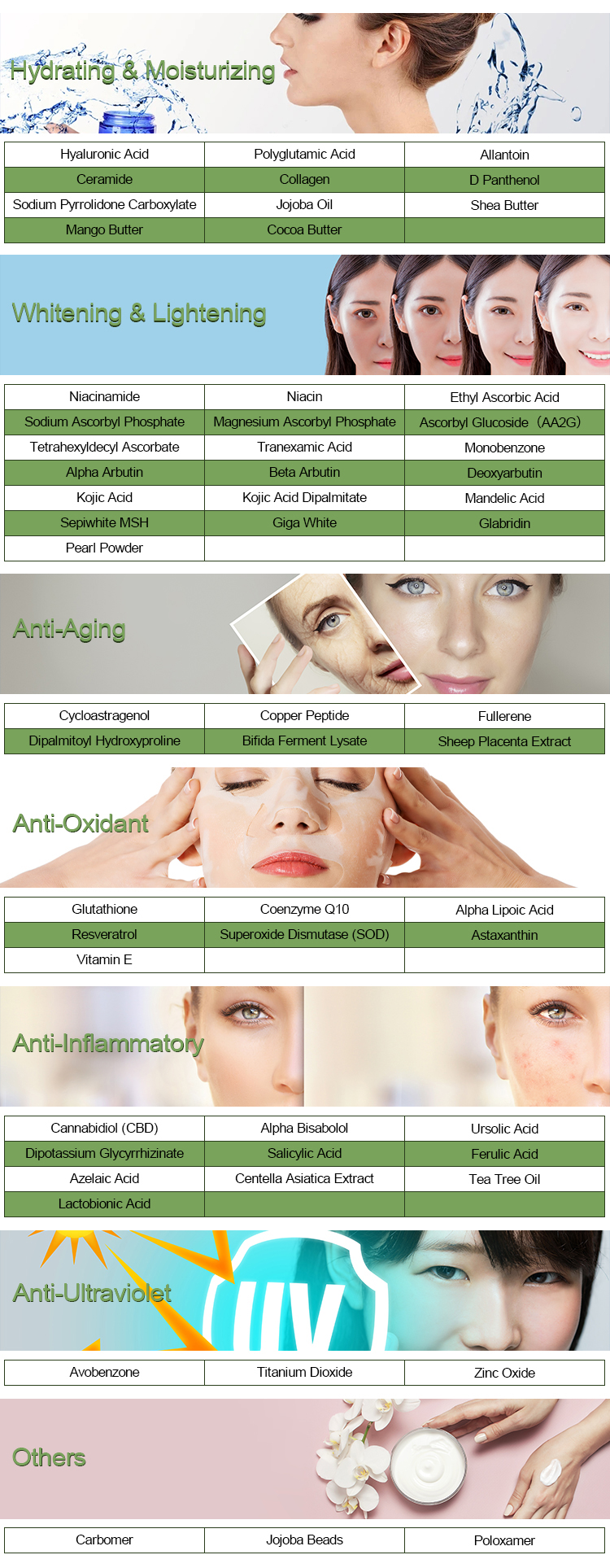Poloxamer 407, also known by its trade name Pluronic F127, is a synthetic block copolymer that has gained significant attention in various fields, including pharmaceuticals, biotechnology, and materials science. It is part of a class of surfactant molecules that consist of both hydrophilic and hydrophobic segments. Here’s a comprehensive overview of Poloxamer 407:
1.Chemical Structure: Poloxamer 407 is a triblock copolymer composed of three segments: a central hydrophobic polypropylene oxide (PPO) block flanked by two hydrophilic polyethylene oxide (PEO) blocks. The PEO-PPO-PEO structure gives it amphiphilic properties.
2.Physical Properties: Poloxamer 407 is a semi-solid, waxy material at room temperature. It is soluble in water and has a low critical micelle concentration (CMC), which means it can readily form micelles at low concentrations in aqueous solutions.

3.Applications:
Pharmaceuticals: Poloxamer 407 is widely used in the pharmaceutical industry as a solubilizing agent, emulsifier, and stabilizer for poorly water-soluble drugs. It can improve the bioavailability of certain drugs.
Biotechnology: It is used in the formulation of various biopharmaceuticals, such as protein and peptide-based drugs, for drug delivery and stability enhancement.
Materials Science: Poloxamer 407 is employed in the creation of hydrogels, controlled-release systems, and as a component in various drug delivery systems.
Cosmetics: It is used in cosmetic products to stabilize emulsions, enhance product texture, and improve skin feel.
4.Thermoreversible Gelation: One of the unique properties of Poloxamer 407 is its ability to form thermoreversible gels. These gels become more viscous as the temperature decreases, making them ideal for various applications, including controlled drug release.
5.Safety: Poloxamer 407 is generally considered safe for use in pharmaceuticals and cosmetics. However, some individuals may be sensitive to it, and adverse reactions can occur in rare cases.
6.Solubilizing Properties: It is often used to increase the solubility of hydrophobic drugs in aqueous systems. By micellization and solubilization, it can enhance the dispersion of poorly soluble drugs.
7.Drug Delivery: Poloxamer 407 is used in the development of drug delivery systems like micelles, nanoparticles, and liposomes. These systems can encapsulate drugs and release them in a controlled manner.
8.Toxicity and Biocompatibility: Poloxamer 407 is generally considered safe for use in pharmaceuticals, but its safety profile depends on the specific application and dosage. The potential for toxicity is a concern, and careful testing and evaluation are necessary.
9.Regulatory Considerations: In many countries, Poloxamer 407 is approved for pharmaceutical and cosmetic use, subject to regulatory guidelines. Manufacturers and researchers should ensure compliance with relevant regulations.
10.Research Areas: Ongoing research focuses on optimizing drug delivery systems, exploring its use in cancer therapy, gene delivery, and as a potential therapeutic agent for various medical conditions.
In summary, Poloxamer 407 is a versatile and widely used copolymer with applications ranging from drug delivery to cosmetics. Its ability to form thermoreversible gels and solubilize hydrophobic compounds has made it a valuable tool in various industries. However, researchers and formulators should consider its potential toxicity and regulatory guidelines when using it in different applications.
